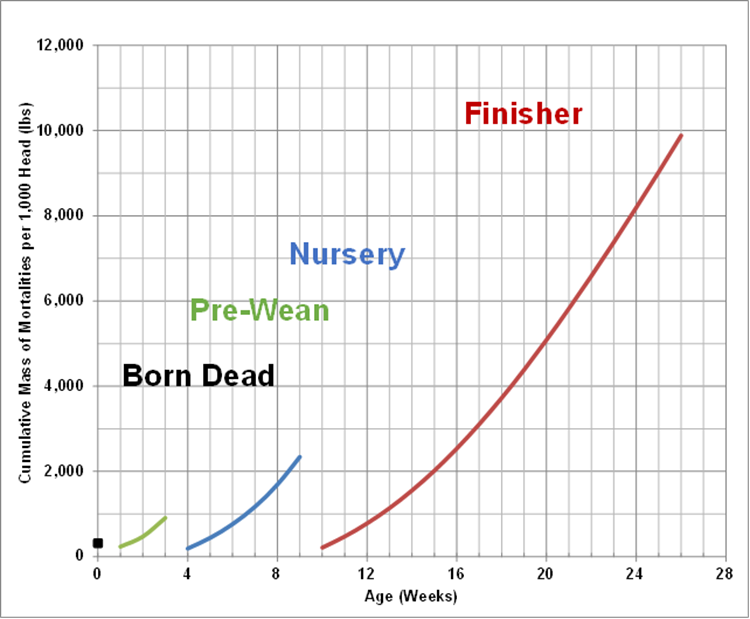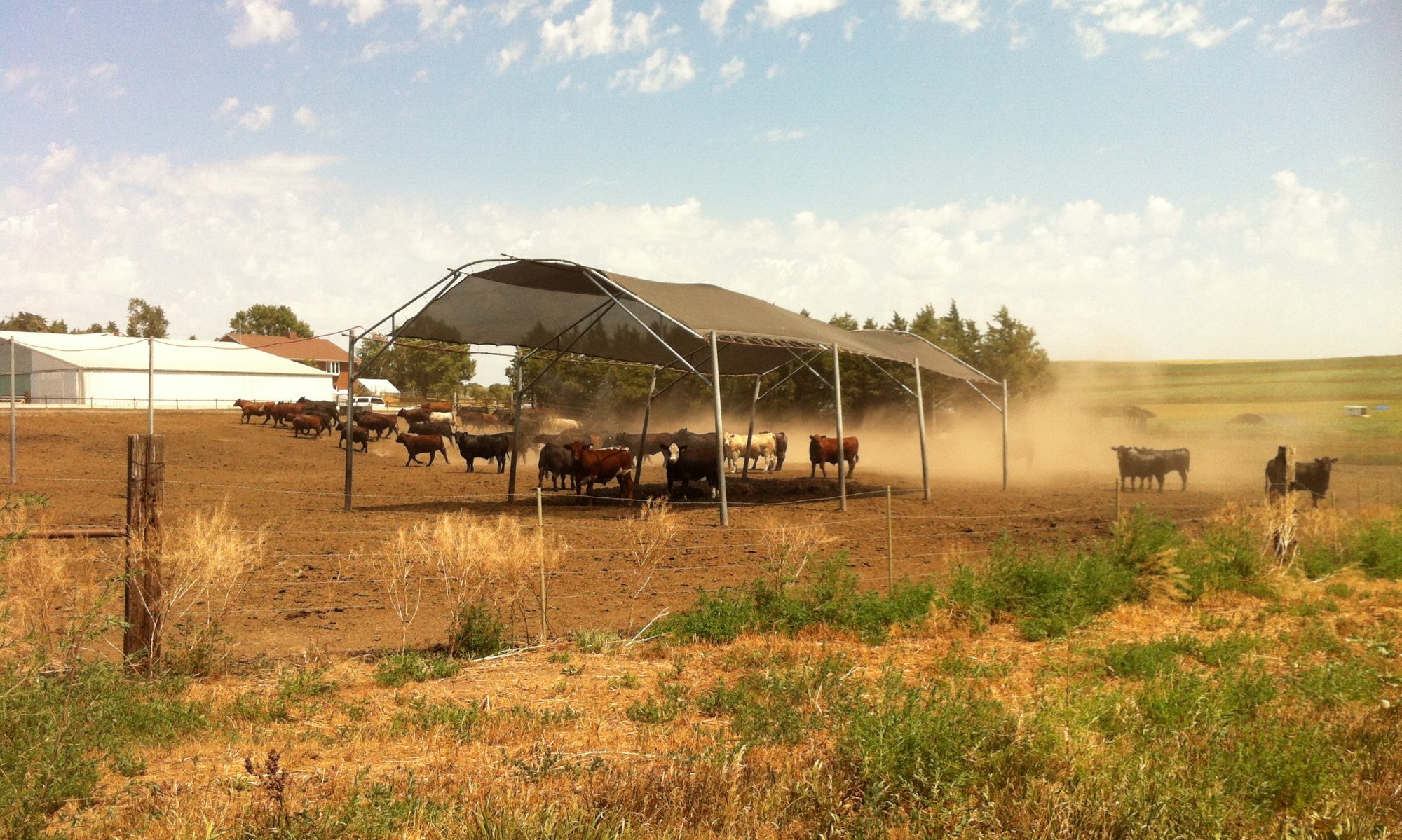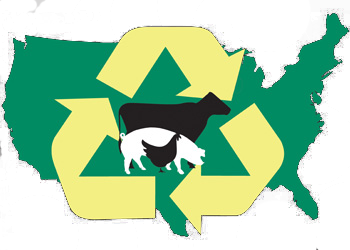Purpose
Swine producers must dispose of the day-to-day losses of hogs and pigs on the farm. Unfortunately, most published data of swine mortalities are for one-time catastrophic events – where all the animals on a farm must be exterminated for disease outbreaks or natural disaster. Routine mortalities on hog farms do not happen all at once, and mortality rates vary greatly between different life stages of swine.
This presentation is the work of an expert panel commissioned by the US-EPA Chesapeake Bay Program to determine annual nitrogen and phosphorus masses produced on swine farms. In this presentation we will show results for annual mortality weights produced on farrow-to-finish, farrow-to-wean, nurseries, and finisher farms.
What Did We Do?
The panel looked, at depth, into existing swine production systems, and combined morality rates at different life stages, size of animals, and the age of varying carcass composition to determine mortality and nutrient masses produced during the production-flow of 25,000 market hogs. All phases of production – gestation, farrowing, nursery, and finishing – rarely occur on the same farm in modern hog production. The panel broke a single farrow-to-finish operation down into its component parts to estimate production of annual mortalities on all types of farms found in the watershed.
What Have We Learned?
Table 1 shows the expected mortality mass produced by a farrow-to-finish swine farm in Southeastern Pennsylvania with a production-flow of 25,000 market hogs per year. Annual Death Rate for all breeding stock (Sows, Gilts, Boars) was assumed to be 7.8% (USDA-APHIS, 2012). Weights at time of death are from Etienne et al. (2016). Weight of Pigs born dead were calculated using values from USDA-APHIS (2012) and Etienne et al. (2016). Mortality masses for growing stock (Weaned Pigs, Feeder Pigs, Finishers) was determined by combining an estimated growth curve for swine (Hamilton et al., 2021) and industry death rate data (Pork Checkoff, 2018). It should be noted that the Pork Checkoff data for mortalities was collected after the PEDv outbreak of the 2010s. Figure 1 shows the cumulative weekly weight of mortalities collected for a population of 1,000 pigs or hogs placed in confinement. It should also be noted that the number of pigs placed in confinement is equal to the number of pigs leaving the previous phase of production in Table 1; i.e., 27,500 weaned pigs entered the nursery each year, 9,600 died in the nursery, and 25,000 left the nursery.
| Inventory | Number Leaving Phase Each Year | Animals Dying (Head yr-1) | Animal Weight at Death (Lbs.) | Mortality Mass (lbs. yr-1) | |
|---|---|---|---|---|---|
| Sows | 1,150 | – | 90 | 450 | 40,000 |
| Gilts | 115 | – | 19 | 300 | 2,700 |
| Boars | 12 | – | 1 | 700 | 700 |
| Pigs Born Dead | 0 | – | 3,200 | 2.95 | 9,450 |
| Weaned Pigs | 2,000 | 27,500 | 9,500 | – | 30,000 |
| Feeder Pigs | 3,900 | 26,000 | 1,500 | – | 64,000 |
| Finishers | 9,700 | 25,000 | 1,400 | – | 260,000 |
| Total | 16,877 | 406,900 | |||
| Per Sow | 350 | ||||
| Per Sow Animal Unit | 790 | ||||
| Per Finisher Sold | 16 | ||||
| Per Finisher Animal Unit | 61 | ||||
| Per Inventory Unit | 24 | ||||

Breaking the numbers shown in Table 1 into smaller production units gives the estimated annual production of mortalities for all types of farms (Table 2). It should be noted that the values in Table 2 for Farrow-to-Finish and Farrow-to-Wean farms do not include afterbirth, which can be a major component of biowaste created on farms with farrowing.
| Annual Weight of Mortalities Produced (lbs. yr-1) | Farrow to Finish | Farrow to Wean | Off-Site Nursery | Finisher Farm |
| Per sow | ||||
| Per Sow (1,000 lb. Animal Units) | ||||
| Per Pig or Hog Leaving | ||||
| Per Pig or Hog Leaving (1,000 lb. Animal Unit) | ||||
| Per Feed-Space (Inventory) | ||||
| 1450 lb. sow 2270 lb. Market Hog 315 lb. Weaned Pig 455 lb. Feeder Pig |
||||
Swine producers can use the values estimated by this project to determine resources needed to prepare for mortalities.
Future Plans
Farms raising swine growing stock should size disposal methods based on the highest expected contribution of all additional life stages found on the farm (Figure 1); i.e., ~ 143 pounds per 1,000 hogs per day for finishers, 72 pounds per day per 1,000 nursery pigs. Swine breeding farms should size disposal practices based on the largest breeding head found on the farm, plus the highest expected contribution of all additional life stages found on the farm (Figure 1) plus afterbirth expected on a daily basis. These values are based on conditions in the Chesapeake Bay Watershed, but can be adapted to any locale. For instance, mortalities in the Midwest may be slightly higher because midwestern market weights are slightly higher than those in the Mid-Atlantic Region.
Authors
Douglas W. Hamilton, Ph.D., P.E., Extension Waste Management Specialist, Oklahoma State University
Corresponding author email address
Dhamilt@okstate.edu
Additional authors
Thomas M. Bass, Livestock Environment Associate Specialist, Montana State University; Amanda Gumbert, PhD., Water Quality Extension Specialist, University of Kentucky; Ernest Hovingh, DVM, PhD., Research Professor Extension Veterinarian, Pennsylvania State University; Mark Hutchinson, Extension Educator, University of Maine; Teng Teeh Lim, PhD, P.E., Extension Professor, University of Missouri; Sandra Means, P.E., USDA NRCS, Environmental Engineer, East National Technology Support Center (Retired); George “Bud” Malone, Malone Poultry Consulting; Jeremy Hanson, WQGIT Coordinator – STAC Research Associate, Chesapeake Research Consortium – Chesapeake Bay Program
Additional Information
Etienne, M., Meinen, R., Kristoff, J., Sexton, T., Long, B., & Dubin, M. (2016). Recommendations to Estimate Swine Nutrient Generation in the Phase 6 Chesapeake Bay Program Watershed Model. Annapolis, MD: Chesapeake Bay Program.
Hamilton, D., Bass, T.M., Gumbert, A., Hovingh, E., Hutchinson, M., Lim, T.-T., Means, S., and G. Malone. (2021). Estimates of nutrient loads from animal mortalities and reductions associated with mortality disposal methods and Best Management Practices (BMPs) in the Chesapeake Bay Watershed (DRAFT). Edited by J. Hanson, A. Gumbert & D. Hamilton. Annapolis, MD: USEPA Chesapeake Bay Program.
Pork Checkoff. (2018). Checkoff’s Pork Industry Productivity Analysis. Des Moines, IA: National Pork Board. https://www.pork.org/facts/stats/industry-benchmarks/#AverageConventionalFinisherProductivity. Accessed October 1, 2019.
USDA-APHIS. (2012a). Swine 2012 Part I: Baseline Reference of Swine Health and Management in the United States, 2012. Washington, DC: United States Department of Agriculture, Animal and Plant Health Inspection Service. https://www.aphis.usda.gov/animal_health/nahms/swine/downloads/swine2012/Swine2012_dr_PartI.pdf. Accessed June 25, 2019.
Acknowledgements
This project was funded by the US EPA Chesapeake Bay Program through Virginia Polytechnical and State University. EPA Grant No. CB96326201
The authors are solely responsible for the content of these proceedings. The technical information does not necessarily reflect the official position of the sponsoring agencies or institutions represented by planning committee members, and inclusion and distribution herein does not constitute an endorsement of views expressed by the same. Printed materials included herein are not refereed publications. Citations should appear as follows. EXAMPLE: Authors. 2022. Title of presentation. Waste to Worth. Oregon, OH. April 18-22, 2022. URL of this page. Accessed on: today’s date.

